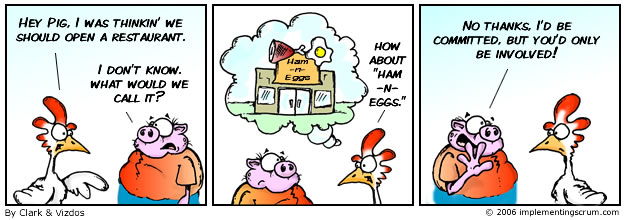 This post has been on my mind, on and off, for about ten years now. I know, I know; I’m slow. It’s about the wide and numerous assumptions people make about design when creating digital products and services. I’ve been doing this for over twenty years now, and to sum it up, we just don’t spend enough time doing design. We pay good lip service to design, but by and large, design is under valued, under sold and always under scrutiny. This is blood boilingly crazy when clearly the likes of Apple, GE, Google, Tesla and Netflix are founded upon the results of great design. So why do the rest of us skimp on design?
This post has been on my mind, on and off, for about ten years now. I know, I know; I’m slow. It’s about the wide and numerous assumptions people make about design when creating digital products and services. I’ve been doing this for over twenty years now, and to sum it up, we just don’t spend enough time doing design. We pay good lip service to design, but by and large, design is under valued, under sold and always under scrutiny. This is blood boilingly crazy when clearly the likes of Apple, GE, Google, Tesla and Netflix are founded upon the results of great design. So why do the rest of us skimp on design?
Defining design
Design is problem solving. Take digital transformation. The challenges businesses face here are gnarly, but we tend to use words like complex and multi-dimensional. There are no single convenient solutions. Equally, there are no completely wrong answers. Instead, we live in the grey where success and failure depends upon how we identify, approach and ultimately solve complex problems. This is design.
About 15 years ago, when you discussed design with (web) sponsors and stakeholders, design always meant creative design. Nowadays, that has marginally corrected itself to be more inclusive of architectural design, system design, content design, operational design, and so on. Sadly, we don’t carve out enough time for designers to design. Increasingly that sees us solving the wrong problems and/or cranking out mediocre solutions.
Solutions should be useful and useable, otherwise they are still problems.
Designers Design
A designer solves problems within a set of constraints – Mike Monteiro
Not everyone can design. We have artists, writers, musicians, athletes for a reason. We also have designers. Countless times I’ve witnessed projects fail because the wrong people are doing design. How many times have you seen subject matter experts / stakeholders, and others solving problems rather than articulating them for designers to solve? This is a dangerous misuse of everyone’s time and core skills, resulting in the wrong set of outputs and outcomes.
Some designers ignore the constraints. Recently, I sat across the table from a project manager responsible for co-ordinating the efforts of her creative team responsible for designing the customer experience for a set of web sites. I was representing the technology team tasked with designing the digital platform that will ultimately bring these customer experiences to life. I asked when we should arrange for the creative team to get familiar with the target medium. To get an early heads up on some of the downstream constraints. The implication was that was an activity beneath the creative team’s pay grade, and it was highly unlikely that they would ever entertain the notion.
I call this exclusive design. I get it. Some people like to design without constraints in order to explore the adjacent possibilities in a constraint free world. Then adapt and rein it back into reality. I’ve seen this “sort-of” work but it had to be well-managed through continuous open and honest dialogue; we were designing. If not, there will be a very expensive ‘undo and rollback to reality’ exercise. A constraint free world? Only when I’m dreaming!
A designer solves problems they have to help identify within a set of ever-changing constraints: without authority – Ian Fenn
I prefer inclusive design. Where teams co-create, embrace and overcome the constraints together. An all for one, one for all musketeer-like approach to design. These multi-disciplinary teams develop rich symbiotic relationships from the get go. Your shit, is my shit, like agile pigs in shit (see below). Here content strategists, technologists, operations, creatives, and support all have a design voice and are committed to the design effort.
Design is about continually finding and over coming ever-changing constraints. This is difficult to do in isolation. I’ve found the best results come by working to the second law of velocity: it’s easier done than said, where seeking forgiveness on your failures rather than permission to do anything yields higher returns in the long run.
Design Complexity
For every complex problem there is a simple solution that is wrong – George Bernard Shaw
Fred Brooks coined the term ‘essential complexity’ back in 1986 in his seminal article entitled No Silver Bullet. A must read. It’s a software engineering classic that lends itself to just about any discipline. Essential complexity is baked into the very problem being solved; you cannot remove it. As a designer, your mission – should you choose to accept it – is to design a solution to a problem without adding ‘accidental complexity’.
Accidental complexity stems from not really understanding the problem and/or approaching the problem in the wrong way. Accidental complexity is avoidable but seldom is through a lack of design. For example, the majority of content management solutions being implemented today, right now, will not have afforded the right amount of time to understand (strategy) and design (architecture) for content to deliver the right-time experiences that their consumers yearn for. So in addition to what is already a mind meld of essential ‘content’ complexity, we are adding an unhealthy and avoidable serving of accidental ‘content’ complexity through a lack of design thinking.
Design Time
We need to sell design. Both internally within our organisations and externally to our clients. The internal sell is exhausting but rewarding. When a project management lifecycle doesn’t have a design phase, that’s a hole that needs to be plugged. Sometimes design artefacts are crammed into discovery or requirements phases. Personally, design is sufficiently important to warrant it’s own time and place in the delivery process. Not surprisingly, every organisation I’ve ever worked for, I’ve had to fight to either get design into the process and/or afford it the time to do it well. Again, internal and external forces factor make this challenging; skills, budget, time.
I believe in agile software development. But its just the how. Lean is why we do what we do in agile. Lean philosophies around the continuous improvement of working practices (kaizen) and getting out of the office and working with the customer (gemba) are just two important terms we lend from lean. Lean thinking needs design thinking to deliver true agility. However, witnessing first hand the number of agile software development projects that lead with a short two-week design and then heads down sprinting into two-week build iterations is not sustainable model for future success. The level of essential complexity is rising within today’s digital problems. Design thinking needs to supplant design skimping if we are going to succeed at the speed and scale that our clients want to engage with their consumers.
Design Thinking
Design is how we operate. It is human-centred. It defines how things work long after that amazing launch party comes that no-one can recollect; good times! Design establishes rationale and helps gauge efficacy through set of guiding principles that governs the solution over the long term.
BMW invested heavily in design thinking. Soon after they acquired Rover back in 1994, they started producing Mini Coopers. I was drafted in to train BMW engineers in emerging software technologies required to automate key systems for manufacturing faster, cheaper, better Mini Coopers. What I witnessed first hand at BMW was design thinking across the entire organisation. As an example, during the Rover days, as a car progressed through the assembly line, engineers got under the car, completed their task, and moved on. With BMW, they obviously re-visited the problem and designed a completely new system where the car was raised, lowered and rotated to match each and every engineers perfect working conditions as it progressed through the assembly line. The impact of design on efficiency and effectiveness was clear for all to see.
BMW are not alone. Thomas Edison, Bill Gates, Steve Jobs surrounded themselves with smart people to progress design. The design thinking links in the references section talk directly to this.
Design Wrap
We are living in a complex world that’s changing at break neck speeds. We have designers from multiple domains innovating in the overlaps. Where development meets operations (devops), digital meets content (experience), people meet products (engagement). However, we are seriously under investing in design thinking. My advice to you is to fight for the right to design because it’s never something you’re given but is absolutely something you should take.


